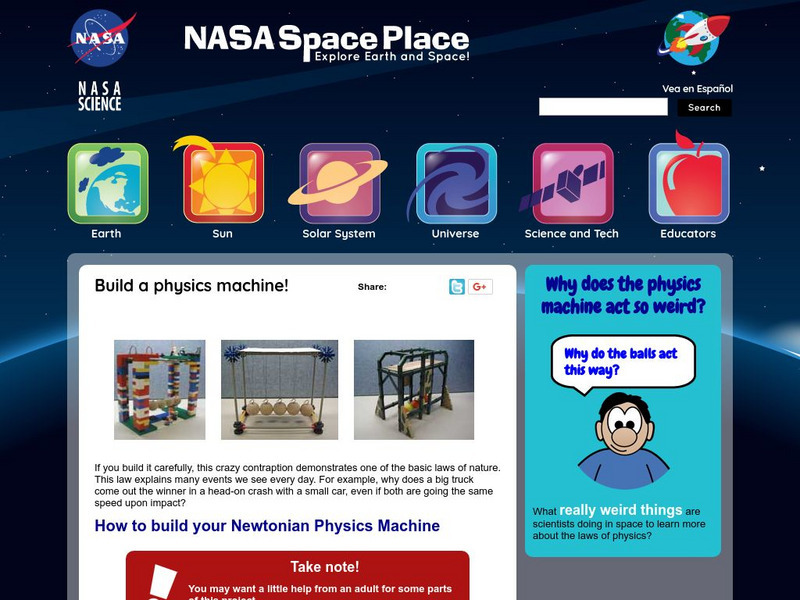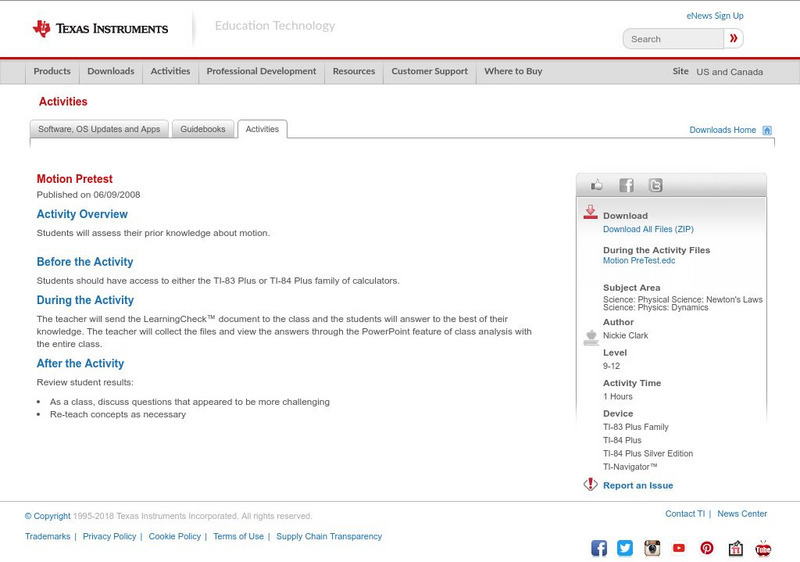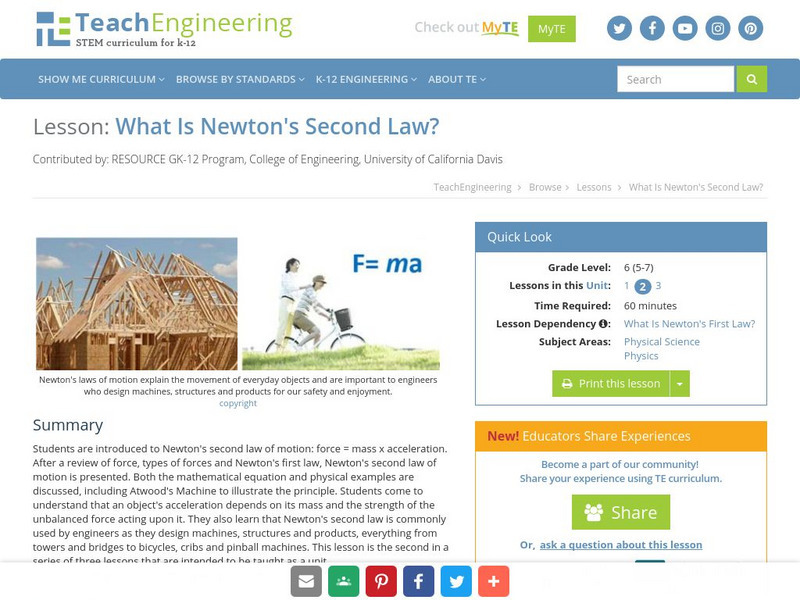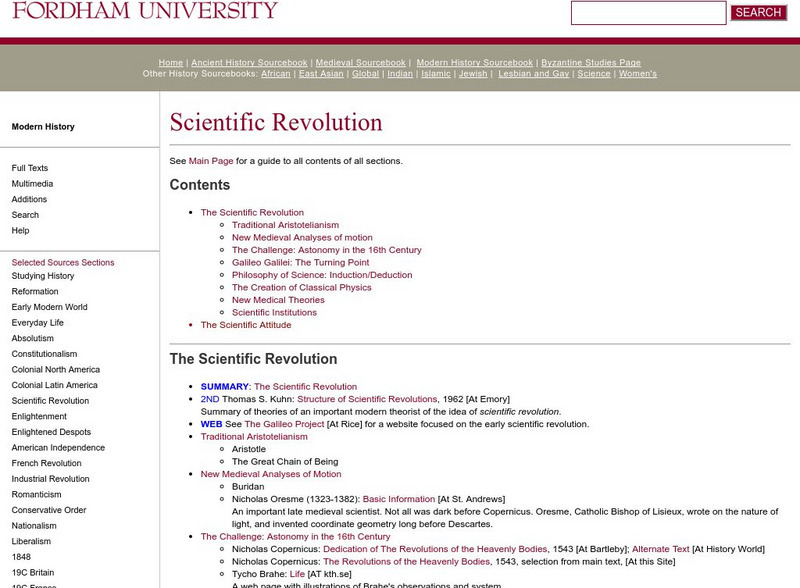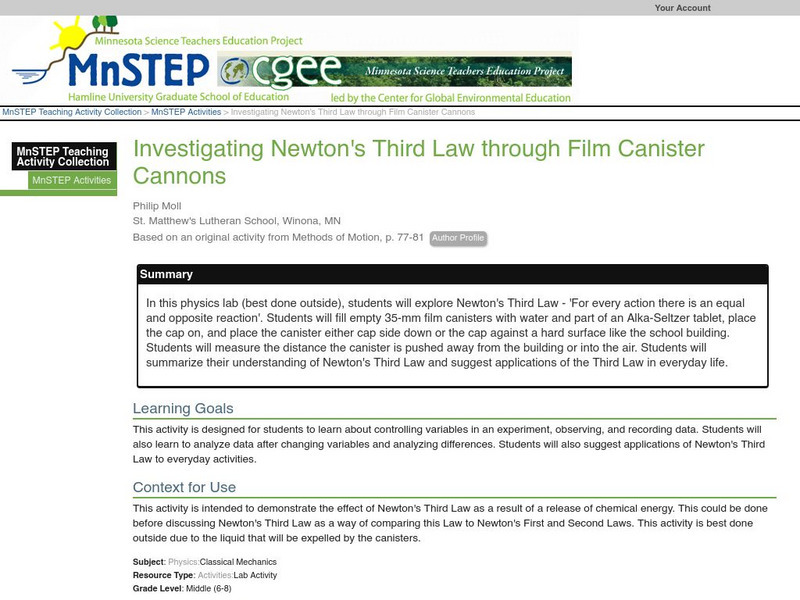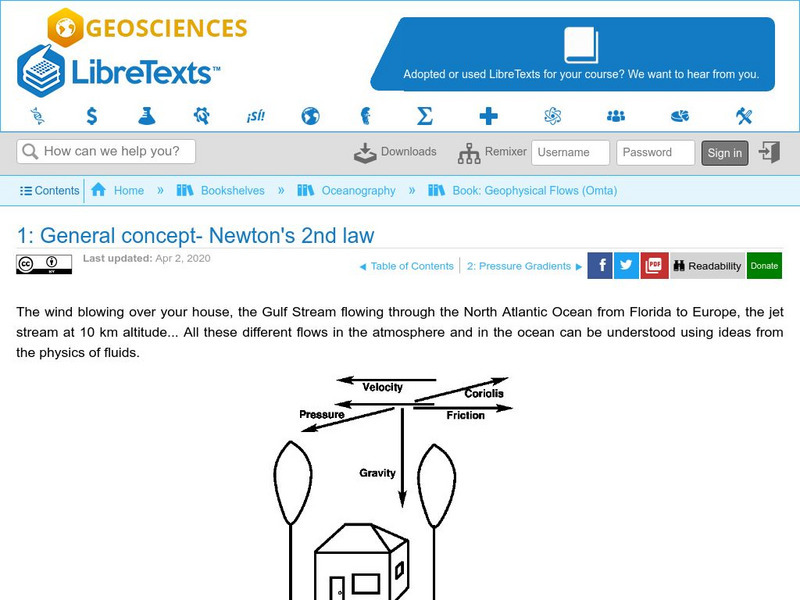Physics Aviary
Physics Aviary: Practice Problems: Motion on Incline Level 1
Students must calculate the distance an object will move up an incline using Newton's Laws. Mass, angle, gravitational field and initial speed will be generated randomly.
Physics Aviary
Physics Aviary: Practice Problems: Motion on Incline Level 2
Students must calculate the distance an object will move up an incline using Newton's Laws. Mass, angle, gravitational field, coefficient of friction and initial speed will be generated randomly.
Physics Aviary
Physics Aviary: Practice Problems: Motion on Incline Level 3
Students must calculate the speed of a block when it returns to its original location on an incline using Newton's Laws. Mass, angle, gravitational field, coefficient of friction and initial speed will be generated randomly.
Physics Classroom
The Physics Classroom: Newtons Laws: Rocket Sledder Interactive
Experience the effect of friction, air resistance, and applied force upon a sledder. The speed, acceleration, and force values are displayed as the sled moves. Learners can vary the mass of the sledder and the size of the parachute...
ClassFlow
Class Flow: Newton's Laws
[Free Registration/Login Required] This flipchart explains Newton's Laws of Motion. Students are given definitions, practical examples and assessed on their knowledge.
The History Cat
The History Cat: Isaac Newton
Profile of Isaac Newton, with a description of his scientific theories, the impact he had on the world of science in his day, and the influence his ideas still have in the world today.
NASA
Nasa: The Space Place: Build a Newtonian Physics Machine
Great hands on way to explain Newton's Second Law of Motion. Choose from three different Newtonian physics machines to build and test Newton's Second Law.
Science Education Resource Center at Carleton College
Serc: Inertia: An Object in Motion Will Tend to Stay in Motion
This activity is a take off of Galileo's experiment with the inclined planes to show that an object in motion would stay in a straight line motion if no outside forces acted were acting on it. For this version, students will roll a ball...
Science Education Resource Center at Carleton College
Serc: Investigating Projectile Motion: Creating a Catapult
This lesson is for 9th grade physical science students. It begins with an inquiry-based lesson using a projectile motion computer simulation. It culminates with students building a catapult; applying and connecting science knowledge from...
Texas Instruments
Texas Instruments: Motion Pretest
Students will take a pretest to assess their knowledge about motion in a physical science class.
TeachEngineering
Teach Engineering: What Is Newton's Third Law?
Students are introduced to Newton's third law of motion, and then learn that engineers apply Newton's third law and an understanding of reaction forces when designing a wide range of creations, from rockets and aircraft to door knobs,...
TeachEngineering
Teach Engineering: What Is Newton's First Law?
Students are introduced to the concepts of force, inertia, and Newton's first law of motion: objects at rest stay at rest and objects in motion stay in motion unless acted upon by an unbalanced force.This lesson is the first in a series...
TeachEngineering
Teach Engineering: What Is Newton's Second Law?
After a review of force, types of forces, and Newton's first law, students are introduced to Newton's second law of motion: force = mass x acceleration.
Science Education Resource Center at Carleton College
Serc: Investigating Newton's 3rd Law: Coin Flick
In this elementary physics investigation, students explore Newton's 3rd Law of Motion: To every action there is an equal & opposite reaction. Pairs of students will line up 5 pennies, (touching each other), between 2 rulers. The row...
CK-12 Foundation
Ck 12: Episd: Newton's First Law
[Free Registration/Login may be required to access all resource tools.] Apply mathematic equations to determine the effects of forces on objects as well as the law of inertia.
CK-12 Foundation
Ck 12: Newton's Third Law of Motion
[Free Registration/Login may be required to access all resource tools.] Students find out about Newton's Third Law of Motion, and explore situations involving multiple objects.
Internet History Sourcebooks Project
Fordham University: Modern History Sourcebook: Isaac Newton
This site from Fordham University links to excerpts of Newton's major works. Please scroll down to find the section on Newton titled "The Creation of Classical Physics." You will be able to actually read some of Newton's work! Read...
Science Education Resource Center at Carleton College
Serc: Investigating Newton's Third Law Through Film Canister Cannons
In this physics lab (best done outside), students will explore Newton's Third Law - 'For every action there is an equal and opposite reaction'. Students will fill empty 35-mm film canisters with water and part of an Alka-Seltzer tablet,...
American Association of Physics Teachers
Com Padre Digital Library: Open Source Physics: Newton's Mountain Model
A science simulation launches a projectile from the top of a mountain testing Newton's theory introduced in Principia.
Science4Fun
Science4 Fun: Laws of Motion
This resource provides a discussion of Newton's Laws of Motion.
Libre Text
Uc Davis Geo Wiki: Newton's 2nd Law
The wind blowing over your house, the Gulf Stream flowing into the North Atlantic Ocean from Florida to Europe, the jet stream at 10 km altitude. All these different flows in the atmosphere and in the ocean can be understood using ideas...
Soft Schools
Soft Schools: Physics Quizzes: Newton's Three Laws
Assess your understanding of Newton's three laws of motion and the ability to distinguish between the three with this interactive multiple choice quiz. Receive immediate feedback to your answers.
ClassFlow
Class Flow: Forces in Motion
[Free Registration/Login Required] This lesson explores forces, and how they react to the world around us. It also discusses Newton's Laws of Science.
Physics Classroom
The Physics Classroom: Newton's Second Law of Motion
Learn more about finding acceleration through the practices found in this lesson. "The process of determining the acceleration of an object demands that the mass and the net force are known." Check out this comprehensive site.
Other popular searches
- Motion Newtons Laws
- Physics Newtons Laws of Motion
- Newtons Laws of Motion Sports
- Motion and Newton's Law
- Physics Newtons Laws Motion




